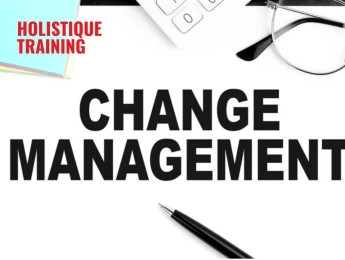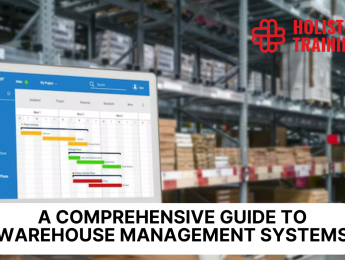- Table of Contents
- Introduction
- Top 5 Risks You May Face at Work
- 1- Physical Hazards
- 2- Ergonomic Risks
- 3- Psychosocial Risks
- 4- Information Security Risks
- 5- Financial Risks
- What Is the Risk Perception Theory In Business?
- What Are the Four Elements of Risk Perception?
- 1- Cognitive Factors
- 2- Emotional Factors
- 3- Social Factors
- 4- Cultural Factors
- The Best Tips for Perceiving Risks
- 1- Educate and Raise Awareness
- 2- Foster a Risk-Aware Culture
- 3- Use Data and Analytics
- 4- Plan and Prepare
- 5- Encourage Collaboration
- Risk Perception During the COVID-19 Pandemic
- Heightened Health Concerns
- Economic Uncertainties
- Misinformation and Infodemic
- Emotional Toll
- Compliance and Adherence
- Conclusion
Introduction
We encounter various risks daily that may impact our well-being and decision-making. Risk perception is vital in how we perceive and respond to potential hazards. Understanding risk perception is crucial for making informed choices and mitigating potential dangers in the workplace or the business world. In this blog post, we will delve into the intricacies of risk perception, explore its application in the workplace and business, and provide valuable tips for enhancing risk perception.
Top 5 Risks You May Face at Work
Now that we have a solid understanding of risk perception and its significance in decision-making, let's delve into the real-world application of these concepts in the workplace. Here are the top five risks individuals may encounter at work and valuable insights on mitigating them effectively:
1- Physical Hazards
The workplace is rife with physical risks, ranging from the seemingly mundane, such as slips and falls, to more complex dangers involving exposure to harmful substances and accidents with machinery. Addressing these hazards requires a multifaceted approach. Comprehensive training programs can equip employees with the knowledge and skills necessary to navigate their physical surroundings safely. Safety protocols, including the use of personal protective equipment (PPE) and regular risk assessments, are instrumental in minimising the likelihood of accidents and injuries. Vigilant housekeeping practices, such as regular cleaning and the use of non-slip flooring, play a pivotal role in preventing slips, trips, and falls.
2- Ergonomic Risks
The advent of technology and changing work structures has brought forth a new set of challenges, particularly in the realm of ergonomics. Prolonged periods of repetitive tasks, coupled with poor posture and inadequate workstation setups, can lead to musculoskeletal disorders and discomfort. Employers can proactively address ergonomic risks by implementing interventions that create a safe and comfortable working environment. This may involve providing ergonomic furniture, encouraging regular breaks, and fostering employee awareness about the importance of maintaining good posture. Periodic ergonomic assessments can identify potential issues and allow for timely adjustments.
3- Psychosocial Risks
Beyond the tangible physical risks, the psychosocial aspects of the workplace are equally critical. Work-related stress, bullying, and an imbalance between professional and personal life can significantly impact mental health and job satisfaction. Cultivating a positive work culture is paramount in mitigating psychosocial risks. Training programs focusing on stress management and interpersonal skills can empower employees to navigate the complexities of the modern workplace, fostering a resilient and engaged workforce. Here are some other mitigation strategies:
Psychosocial Risks | Mitigation Strategies |
Work-related stress | Promote work-life balance and support |
Bullying | Encourage open communication, zero-tolerance |
Inadequate work-life balance | Implement flexible scheduling policies |
Lack of psychological support | Provide access to mental health resources |
Unclear communication | Foster transparent communication channels |
4- Information Security Risks
Information security has emerged as a cornerstone of workplace risk management in an era dominated by digital interactions. Cybersecurity threats, data breaches, and identity theft pose substantial risks to both businesses and employees. Robust security measures are imperative in safeguarding sensitive information. This includes implementing encryption protocols, regularly updating software, and conducting cybersecurity training for employees. Establishing a culture of cybersecurity awareness, where employees are vigilant about phishing attempts and other online threats, further fortifies the organisation against information security risks.
5- Financial Risks
The financial landscape introduces a unique set of uncertainties that can impact both companies and individuals. Economic downturns, unexpected expenses, and market fluctuations pose challenges that demand strategic foresight. Creating contingency plans tailored to the organisation's financial goals, diversifying investments, and practising responsible financial management are key elements in mitigating financial risks. Educating employees on financial literacy and providing resources for responsible financial planning contribute to a more financially resilient workforce.
Organisations must adopt a holistic and proactive approach to navigating these workplace risks. This involves addressing immediate concerns and fostering a culture of continuous improvement and risk awareness. By recognising the multifaceted nature of workplace risks and implementing comprehensive strategies, businesses can create environments where employees thrive and contribute to the organisation's overall success.
What Is the Risk Perception Theory In Business?
The Risk Perception Theory posits that individuals and organisations do not merely respond to objective risk but also to their perception of risk. It highlights the subjectivity involved in risk assessment, influenced by factors such as personal experiences, cultural background, social influences, and emotional responses. In the context of business, risk perception theory is essential for decision-making and risk management.
Entrepreneurs and executives often assess potential risks and rewards when making business-related decisions. Risk perception theory suggests that two businesses facing the same objective risk may perceive it differently based on their unique contexts and perceptions. A company with a higher risk tolerance may be more inclined to take calculated risks, while a risk-averse company may prioritise caution.
By acknowledging the role of risk perception in business decision-making, companies can better understand their stakeholders' concerns, communicate more effectively, and tailor risk management strategies accordingly.
What Are the Four Elements of Risk Perception?
Having explored the practical implications of risk perception in the workplace, it's time to uncover the underlying elements that shape our perception of risks. Understanding these four key elements - cognitive, emotional, social, and cultural factors - is crucial to gaining deeper insights into how we perceive and respond to potential hazards. Let's take a closer look at each element and its impact on risk perception:
1- Cognitive Factors
Cognitive factors encompass individuals' mental processes for interpreting and processing information about risks. These cognitive processes often involve the use of mental shortcuts, biases, and heuristics that, while efficient, can also lead to deviations from objective assessments. For instance, the availability heuristic may cause individuals to overestimate the likelihood of risks based on recent events or vivid media coverage.
Understanding these cognitive tendencies is essential for businesses aiming to communicate risks more effectively. Companies can tailor their risk communication strategies by recognising how individuals process information to align with cognitive patterns. This involves presenting information in a clear and accessible manner, acknowledging potential cognitive biases, and providing context to enhance overall comprehension.
2- Emotional Factors
Emotions wield significant influence over how risks are perceived. Feelings of fear, anxiety, or excitement can shape individuals' reactions to risks, impacting their willingness to engage with or avoid certain situations. For example, heightened fear may lead to increased risk aversion, while positive emotions may encourage a more risk-taking attitude.
In the business context, managing emotional responses to risk is crucial. Leaders need to be tuned to the emotional climate within their teams and organisations, recognising when heightened emotions may impact decision-making. Addressing emotional factors involves creating a supportive work environment, fostering a positive organisational culture, and providing resources for stress management. By doing so, businesses can enhance overall well-being and promote more balanced risk perceptions.
3- Social Factors
Social factors delve into the influence of peers, leaders, and societal norms on risk perception. Humans are inherently social beings, and their assessments of risk often align with the opinions of those around them. Individuals seeking validation and a sense of belonging may adjust their risk assessments to conform to social expectations.
Leveraging social factors in the business sphere involves cultivating a risk-aware culture. Encouraging open dialogue about risks, promoting collective responsibility in risk management, and highlighting the importance of shared values contribute to a cohesive risk perception within an organisation. Businesses can create a collaborative and informed decision-making environment by acknowledging and addressing social influences.
4- Cultural Factors
Cultural backgrounds are pivotal in shaping individuals' risk perceptions and tolerance levels. Different cultures may prioritise certain risks over others, influencing attitudes and behaviours toward risk. For example, a culture valuing stability and tradition may approach risks cautiously, while a culture emphasising innovation may embrace a more adventurous approach.
Businesses operating in diverse global markets must consider cultural nuances when communicating and managing risks. Tailoring risk communication to align with cultural sensitivities fosters a more effective and inclusive approach. Moreover, understanding cultural factors enables organisations to adapt risk management strategies to resonate with stakeholders from varied cultural backgrounds, enhancing overall receptivity and compliance.
These four elements collectively contribute to the intricate tapestry of risk perception. Recognising the interconnectedness of cognitive, emotional, social, and cultural factors is paramount for businesses seeking to navigate the complexities of decision-making in the face of uncertainty. By understanding and addressing these elements, organisations can foster a more holistic and nuanced approach to risk perception, ultimately leading to more informed and resilient decision-making.
The Best Tips for Perceiving Risks
As we continue our journey to unravel the concept of risk perception, let's now turn our attention to the best practices that can help us perceive risks more effectively. These essential tips are designed to empower individuals and businesses alike in their quest to navigate hazards and make informed decisions. Let's explore the top strategies to unlock the full potential of risk perception:
1- Educate and Raise Awareness
Knowledge is a powerful ally in the realm of risk perception. Providing comprehensive training and information about potential risks at work or in business is foundational to empowering individuals to make informed decisions. Regularly communicating risk assessments, best practices, and updates ensure a well-informed workforce. This educational approach enhances individual awareness and fosters a collective understanding of potential hazards, promoting a culture of shared responsibility.
For businesses, investing in ongoing training programs is a risk mitigation strategy and cultivates a sense of employee confidence. By equipping the workforce with the necessary information, businesses create a proactive environment where individuals are more likely to identify and address risks in their early stages.
2- Foster a Risk-Aware Culture
Building a culture that encourages open communication about risks is instrumental in empowering individuals to voice their concerns. Establishing an environment where employees feel comfortable sharing their observations and insights creates a dynamic feedback loop for risk identification. A culture of transparency and accountability leads to proactive risk management, as employees at all levels actively contribute to the organisation's risk awareness.
This cultural approach involves not only top-down communication but also bottom-up engagement. Employees should be encouraged to participate in risk discussions actively, providing valuable insights from their unique vantage points. In such a culture, everyone becomes a risk manager, collectively contributing to the overall safety and success of the organisation.
3- Use Data and Analytics
The era of big data offers unparalleled opportunities for objective risk assessment. Data-driven insights allow decision-makers to assess risks objectively, identify trends or patterns, and understand potential impacts. Incorporating analytics into risk scenarios enables more strategic decision-making, moving beyond intuitive judgements to evidence-based strategies.
Data and analytics provide a quantifiable foundation for discussions in the context of risk perception. Leveraging data ensures a more accurate understanding of the risk landscape, whether assessing workplace safety trends or evaluating market risks. Integrating analytics tools into risk management processes enhances the organisation's ability to respond proactively to emerging threats.
4- Plan and Prepare
Effective risk perception goes hand in hand with preparedness. Developing contingency plans for potential risks, both in the workplace and in business operations, is a proactive measure that minimises the adverse effects of unexpected events. Preparedness mitigates risks and ensures a swift and coordinated response when risks materialise.
This tip is essential to business continuity planning, crisis management frameworks, and disaster recovery strategies. By anticipating potential scenarios and outlining response plans, organisations position themselves to navigate uncertainties with resilience. In the face of unexpected events, having a well-defined plan ensures a structured risk management approach.
5- Encourage Collaboration
Risk perception is enriched when diverse perspectives come together. Encouraging cross-functional collaboration and seeking input from individuals with varied expertise fosters a comprehensive understanding of potential risks. In a collaborative environment, different viewpoints contribute to innovative risk management solutions, bringing together the strengths of various departments.
Collaboration extends beyond internal teams to external stakeholders. Engaging with suppliers, customers, and industry partners in risk discussions creates a support network and shared responsibility. This collaborative approach enhances risk perception and strengthens the organisation's ability to respond collectively to complex challenges.
Adopting these tips can enhance individuals' and businesses' ability to perceive risks strategically. Whether through continuous education, fostering a risk-aware culture, leveraging data, planning for contingencies, or encouraging collaboration, these strategies collectively contribute to a more resilient and proactive approach to risk management. By embracing these practices, decision-makers can confidently navigate uncertainties, making informed choices that contribute to the long-term success of their organisations.
Risk Perception During the COVID-19 Pandemic
The COVID-19 pandemic brought unprecedented challenges, disrupting workplaces and businesses worldwide. Understanding risk perception during this extraordinary period is essential, as it played a significant role in shaping responses and decision-making. According to a study by NCBI, evaluating the risk perception of a pandemic holds significant value in devising preventive measures and strategic planning. Furthermore, the research findings underscore the potential effectiveness of implementing tailored educational interventions to influence risk perception positively. That said, here's how risk perception influenced individuals and organisations during the pandemic:
Heightened Health Concerns
With the virus's rapid spread, individuals' risk perceptions regarding health and safety skyrocketed. The fear of infection permeated every aspect of daily life, profoundly impacting workplace dynamics. Handwashing, mask-wearing, and social distancing measures became imperative not only in personal spaces but also in professional environments. Businesses had to adapt swiftly to these concerns, implementing stringent health protocols, remote work arrangements, and innovative solutions to safeguard employees and customers. The heightened health concerns underscored the immediate need for organisations to prioritise the well-being of their workforce.
Economic Uncertainties
The pandemic triggered a wave of financial uncertainties reverberating across businesses of all sizes. Companies faced the challenge of navigating fluctuating demand, supply chain disruptions, and revenue loss. The risk perception regarding financial stability rose sharply, leading to conservative spending, cost-cutting measures, and an increased emphasis on contingency planning. Organisations had to balance the immediate financial challenges with the long-term sustainability of their operations, requiring agile decision-making and strategic foresight.
Misinformation and Infodemic
The rapid spread of misinformation on social media platforms significantly influenced risk perception during the pandemic. Individuals struggled to distinguish credible sources from unreliable ones, leading to confusion and uncertainty about the virus and appropriate preventive measures. Businesses, in turn, faced the challenge of countering misinformation and maintaining transparent communication with their stakeholders. The need for accurate, timely information became paramount, highlighting the importance of effective communication strategies in managing risk perception during a crisis.
Emotional Toll
The pandemic took a substantial emotional toll on individuals, amplifying stress, anxiety, and feelings of isolation. These heightened emotions directly impacted risk perception, influencing decision-making at both personal and organisational levels. Businesses had to prioritise employee well-being and mental health support while making critical decisions. Recognising the emotional strain on their workforce, some organisations implemented additional support systems, including mental health resources, virtual team-building activities, and regular check-ins to maintain a sense of connection amid physical distancing.
Compliance and Adherence
Risk perception significantly affected compliance with government regulations and health guidelines. Individuals and businesses were more likely to adhere to mandates and recommendations when their risk perception was higher. This collective adherence contributed to the overall efforts to control the virus's spread. Companies that proactively communicated the importance of compliance and implemented clear safety measures prioritised their employees' health and gained trust and loyalty from their workforce and customers.
Businesses had to demonstrate adaptability, empathy, and clear communication to navigate risk perception during the pandemic. The crisis's ever-evolving nature demanded a dynamic approach, with organisations continuously reassessing risks and adjusting strategies accordingly. Companies that effectively addressed the changing risk landscape and prioritised employee safety and well-being gained resilience and loyalty from their workforce and customers.
The COVID-19 pandemic is a poignant illustration of how risk perception shapes responses and decision-making during extraordinary times. Understanding the multifaceted nature of risk perception during such crises is crucial for businesses as they prepare for future uncertainties. It emphasises the need for flexibility, empathy, and strategic planning in navigating dynamic risk landscapes. By acknowledging the impact of health concerns, economic uncertainties, information challenges, emotional well-being, and compliance dynamics, businesses can derive valuable lessons for building resilience and ensuring preparedness in the face of future crises. The experience of the pandemic underscores that risk perception is not static but a fluid and influential force that requires continuous attention and adaptive strategies.
Conclusion
Risk perception is a multifaceted concept that profoundly influences how individuals and businesses navigate hazards. By recognising the subjective nature of risk perception and understanding the cognitive, emotional, social, and cultural factors involved, companies can make more informed decisions, foster a risk-aware culture, and build resilience in the face of uncertainties. Empowering individuals with knowledge, promoting open communication, and leveraging data-driven insights are essential to enhancing risk perception and building a safer and more successful work environment and business landscape.
If you're eager to delve deeper into the world of risk management and learn practical strategies to navigate uncertainties effectively, make sure to check out our course, ‘Business Risk Management Essentials & Strategies.’ Empower yourself with the knowledge and skills necessary to master risk perception and create a safer, more resilient future for your organisation.
























